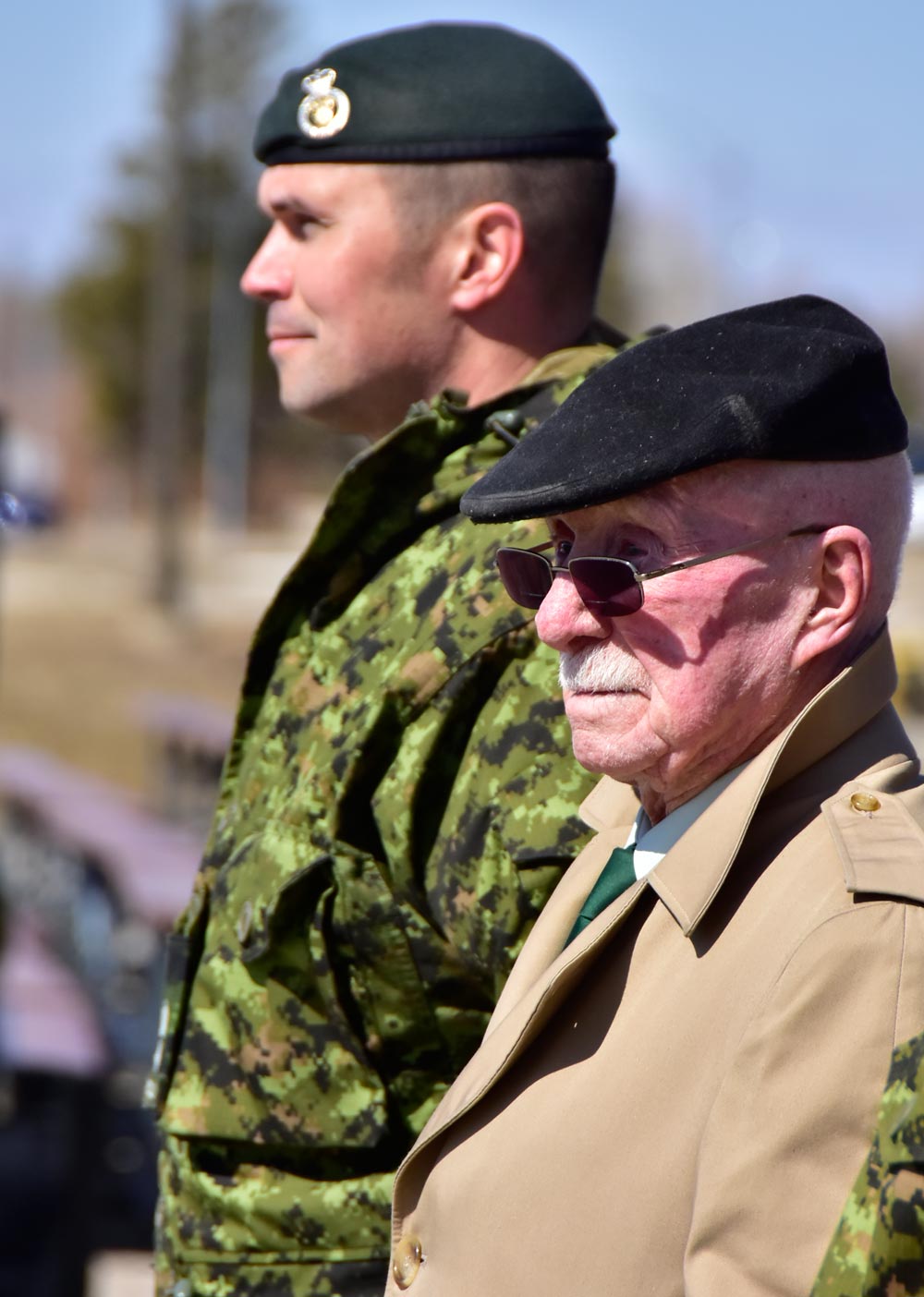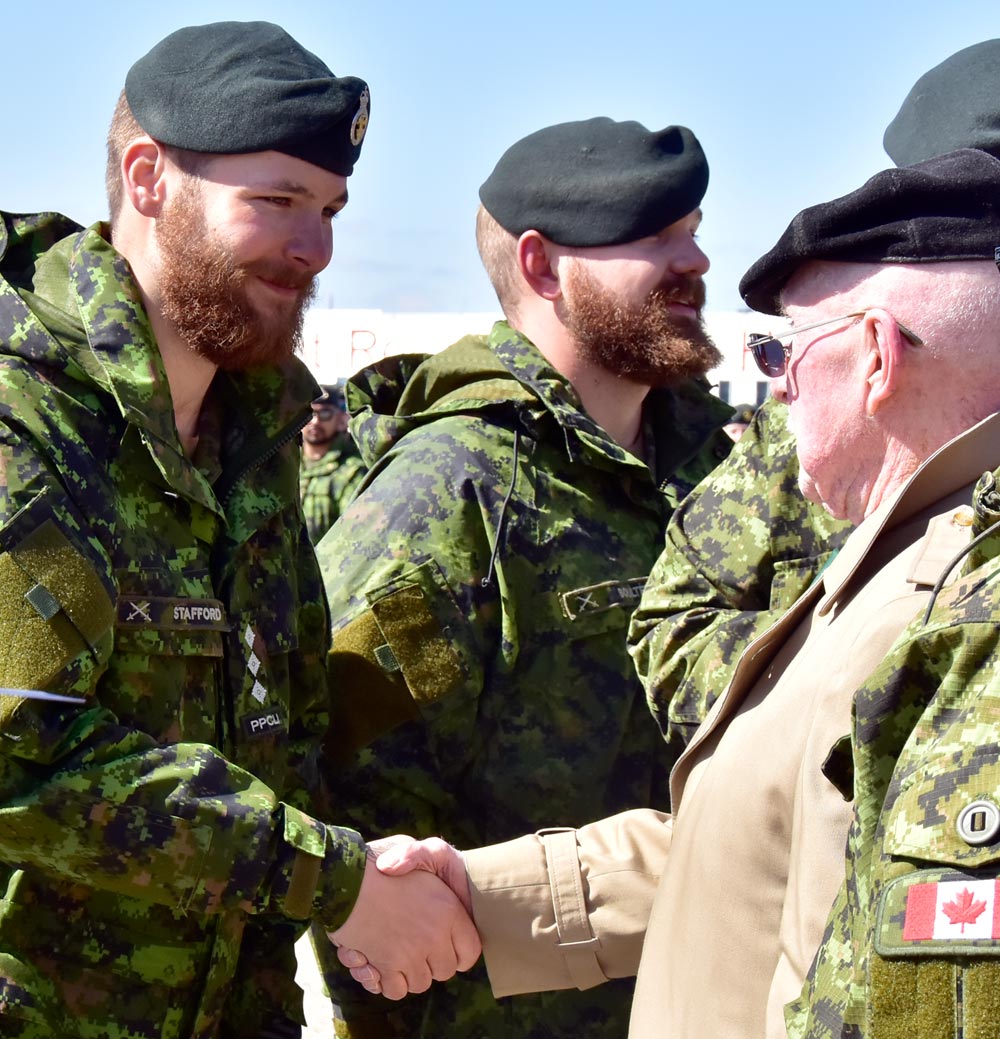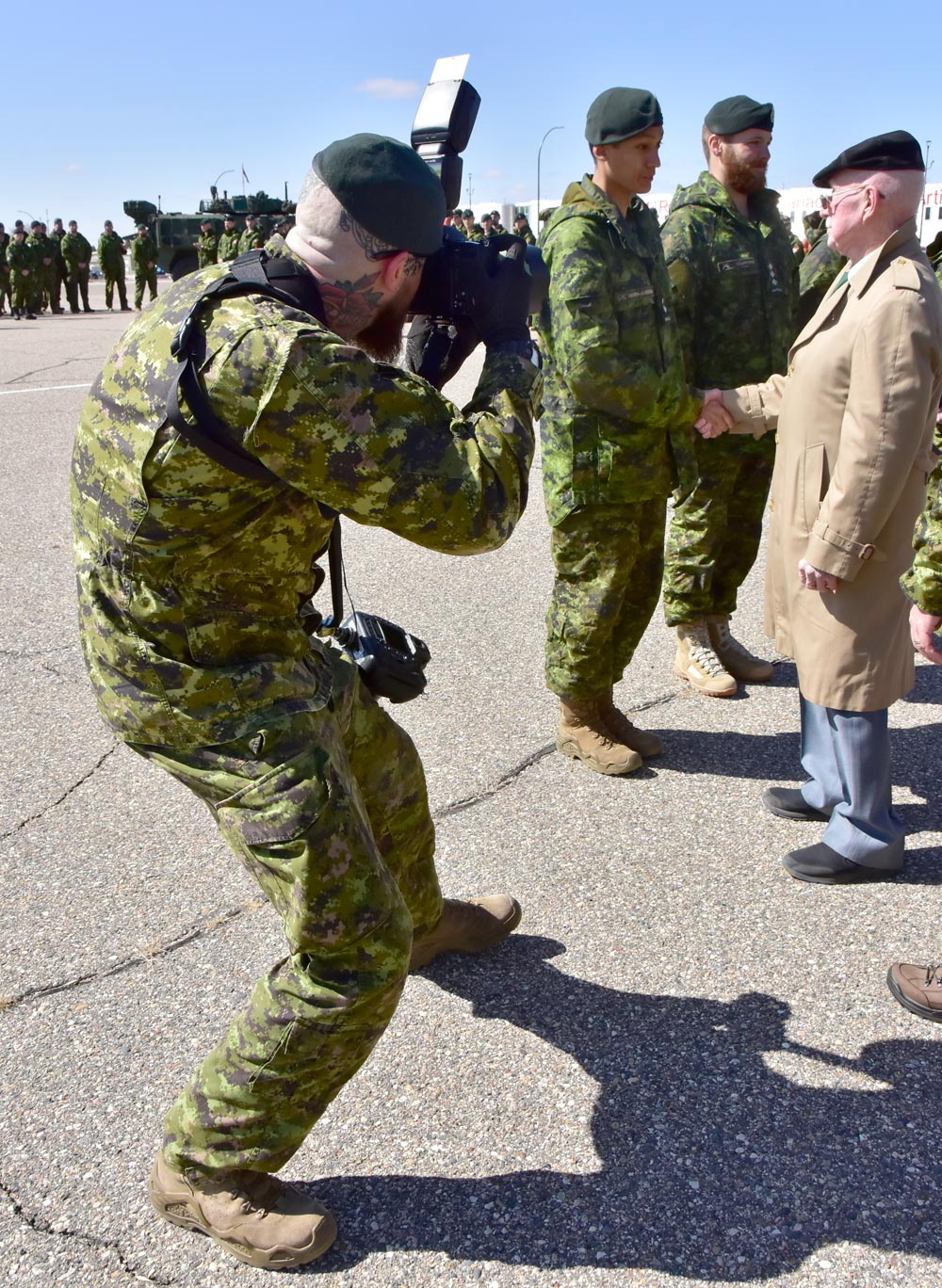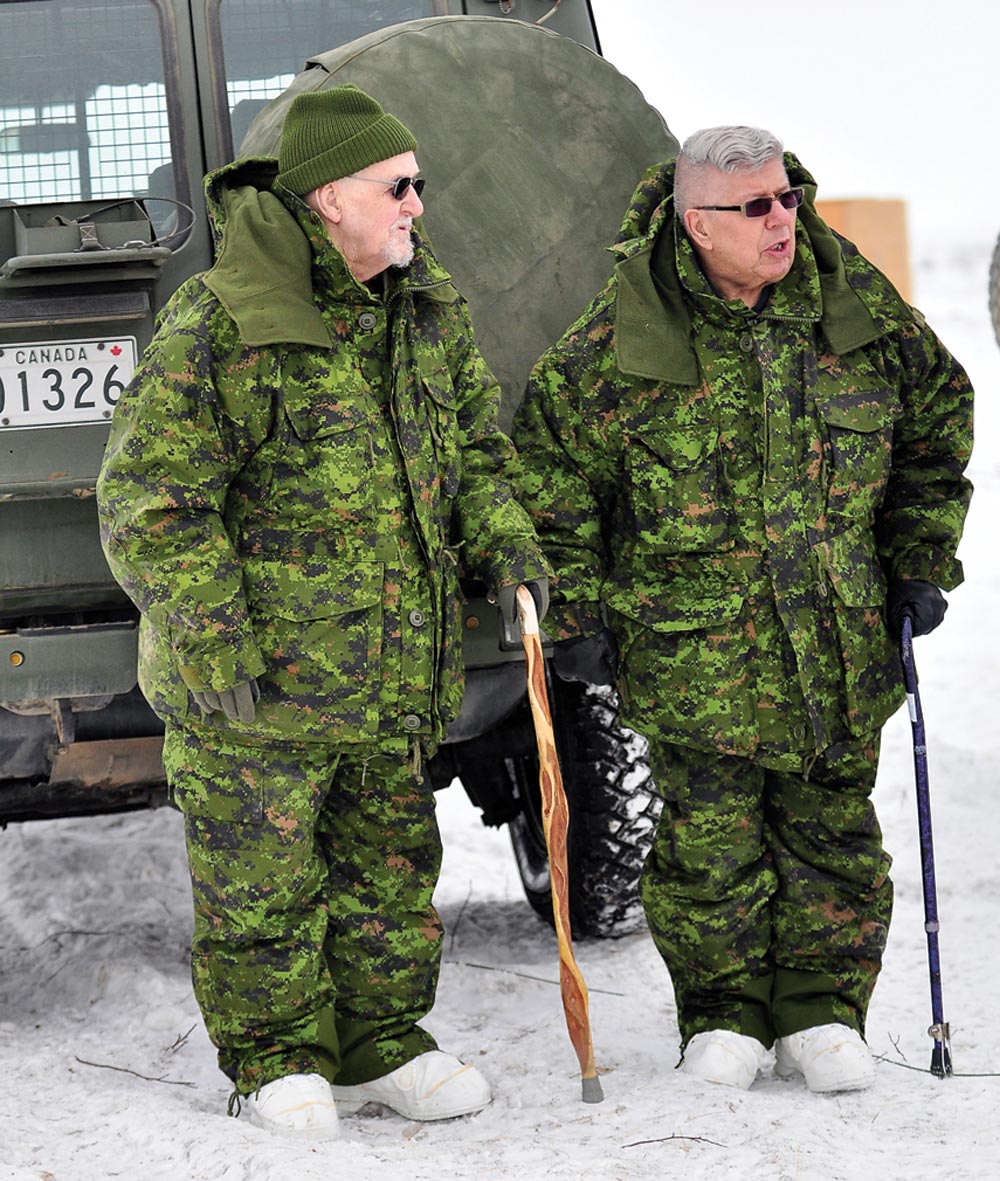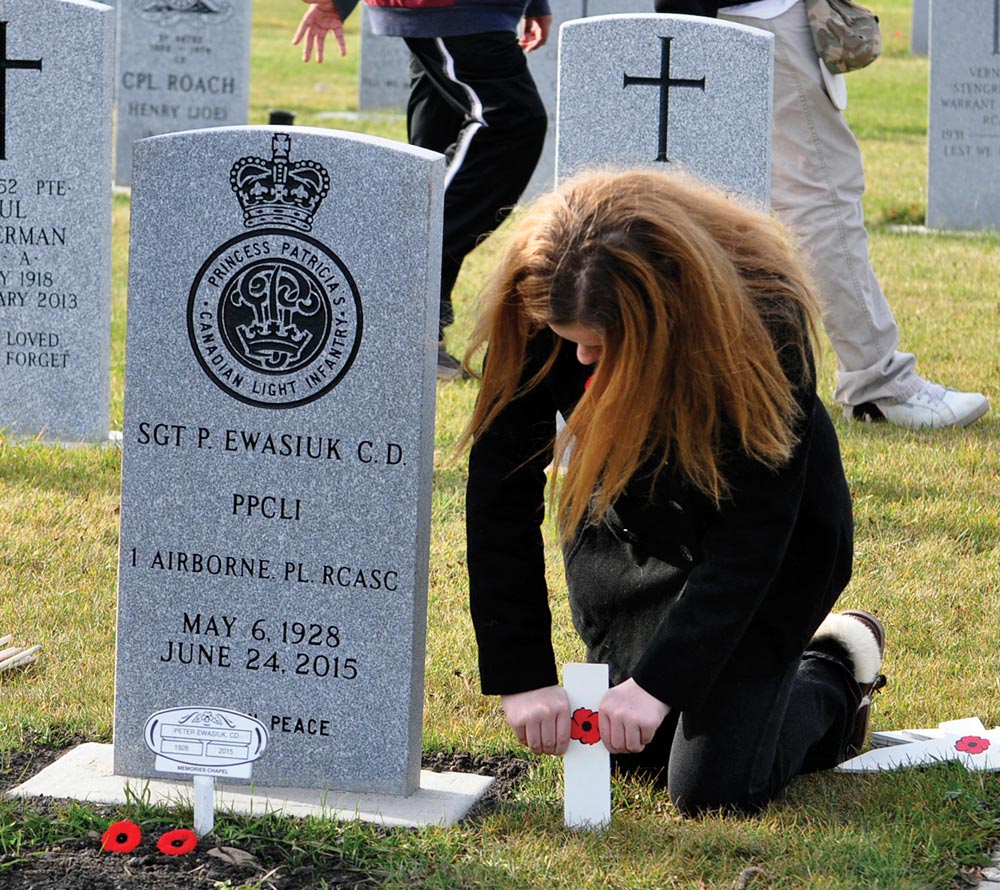
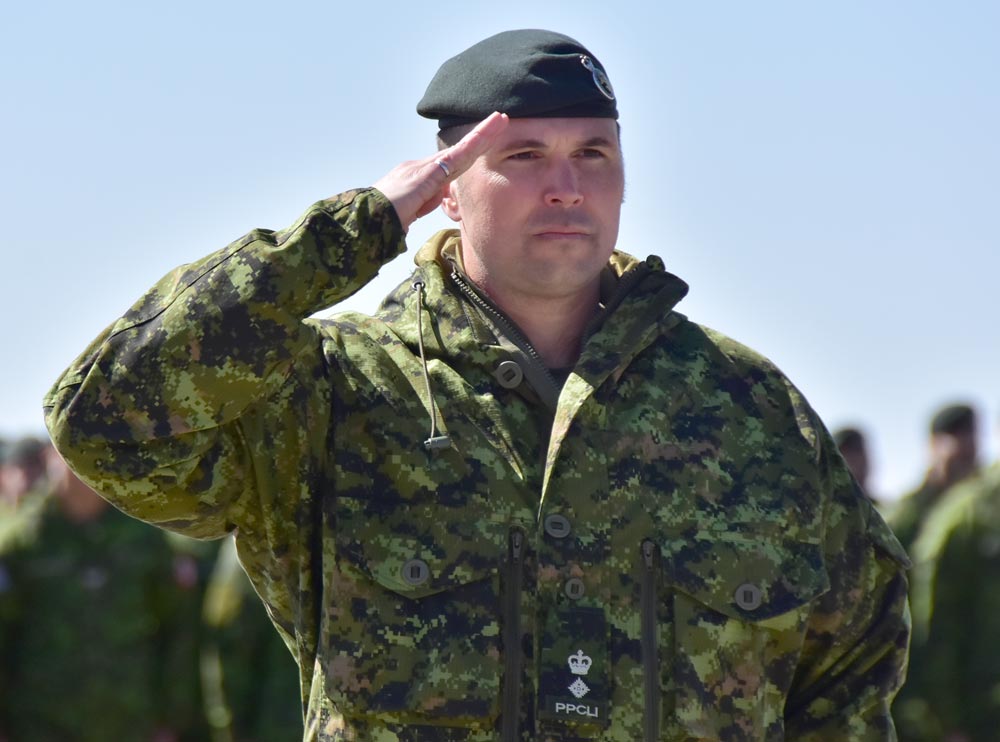

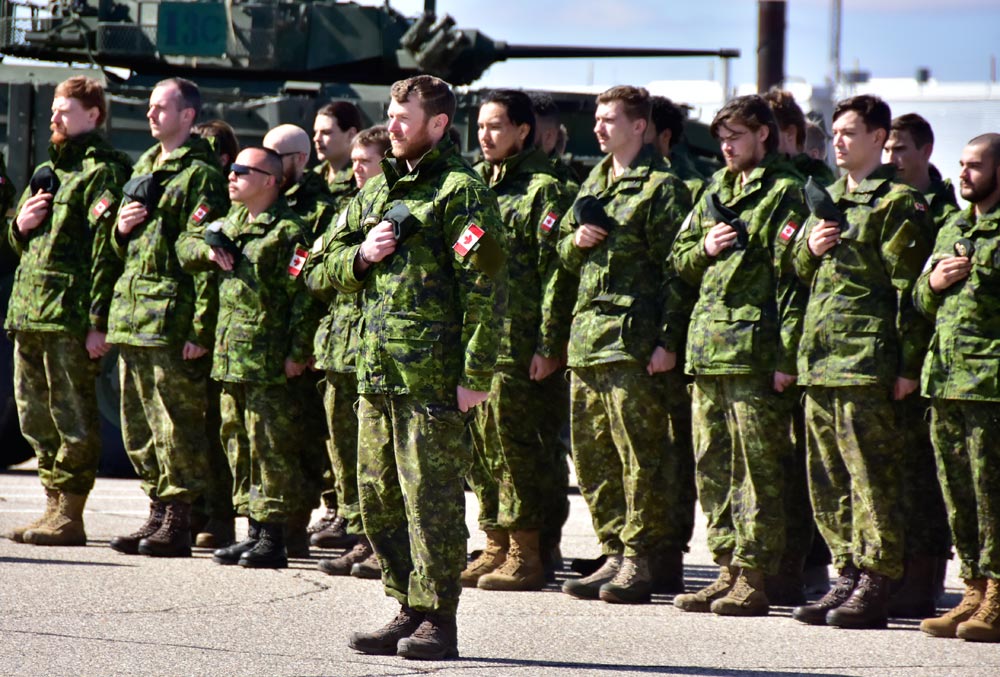
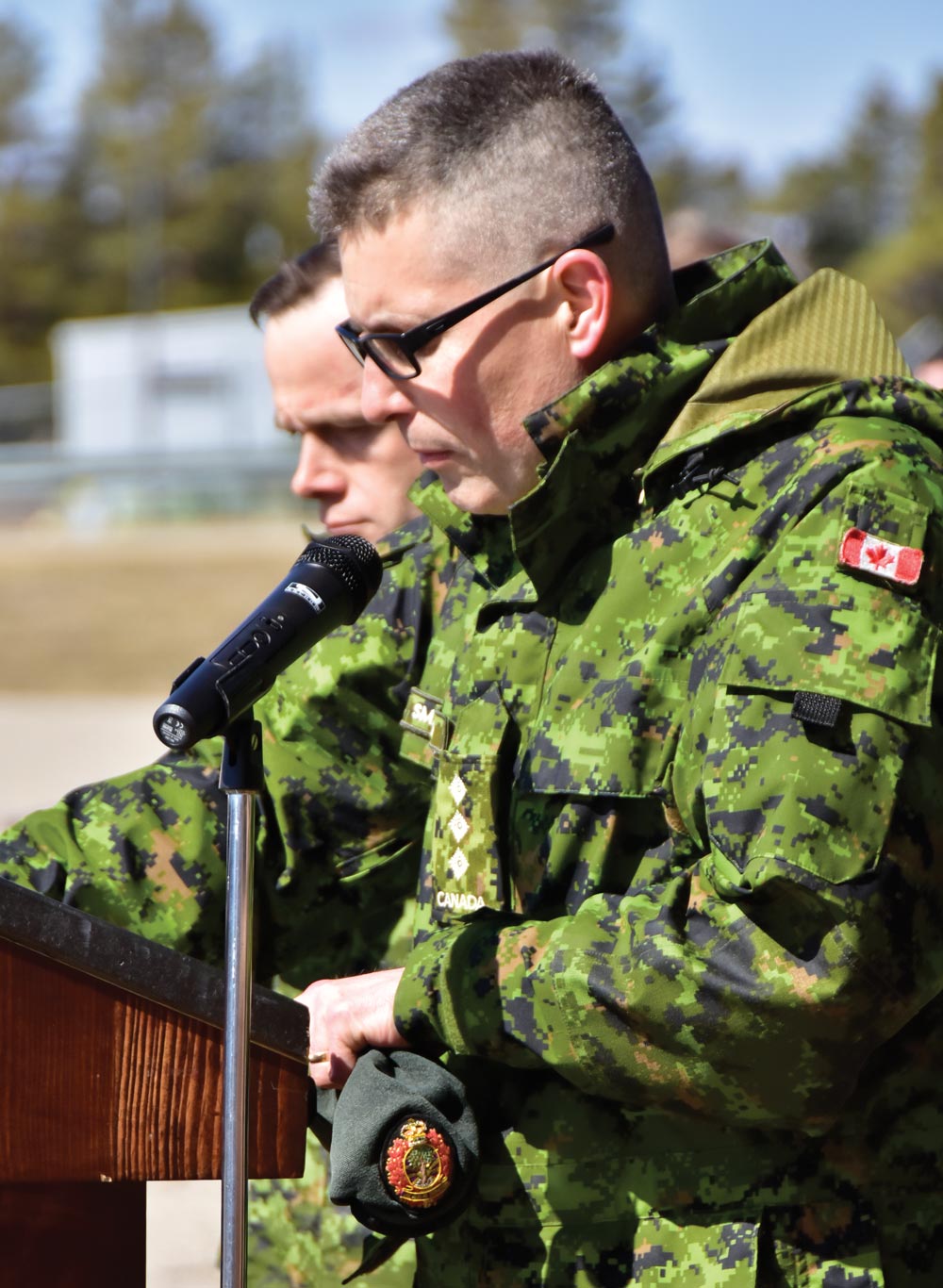

Shilo Stag
“I served 15 months in Korea, serving with 2PPCLI. It took 60 years for Canada to recognize what we did,” recalled the late Sgt (Ret’d) Peter Ewasiuk.
He made that comment in 2011 during an event on the Base when 2PPCLI marked the 60th anniversary of the Battle of Kap’yong. Up to his 87th birthday, Sgt (Ret’d) Ewasiuk helped organize commemorations of the Battle of Kapyong at CFB Shilo every year until his death on June 24, 2015.
2nd Battalion Princess Patricia’s Canadian Light Infantry (2PPCLI) as part of the 27th Commonwealth Brigade had spent the months leading up to the Battle of Kap’yong fighting for all the ground it had gained advancing up the Cho’jung and Kap’yong Valleys.
Then on the night of April 22, 1951, the North Korean and Chinese forces launched a counter attack on the Western side of the UN front lines. Withdrawals were ordered and the 27th Commonwealth Brigade was moved to set up a defensive position to provide overwatch for the 6th ROK (Republic of Korea) Division’s withdrawal from the Kap’yong Valley.
On April 23, 2PPCLI moved to Hill 677 under the command of LCol Big Jim Stone. Hill 677 provided a commanding view of the valley and the Battalion began digging in with B Coy taking the low ground to the east between the hill and the Kap’yong River, with anti-tank Platoon providing depth to B Coy’s position.
Meanwhile, A Coy occupied the northeast corner of the hill covering the northern and northeastern approaches of the valley. D Coy occupied the western side of the hill, with C Coy closing off the triangle on the northern edge. Headquarters was located in the centre.
The 3rd Battalion Royal Australian Regiment (3RAR) occupied Hill 504 to the northeast of Hill 677 across the Kap’yong Valley, supported by a company from the US 72nd heavy tank Battalion.
On the night of April 23, the Chinese forces following close on the ROK’s division withdrawal launched an all out assault on 3RARs’ position. The first phase of the Battle of Kap’yong had begun. Throughout the night the Australians fought the enemy on the hill slopes and in their trenches. They regrouped and tightened their perimeter.
At dawn on April 24, the Chinese withdrew then attacked again. By late afternoon, after fighting off wave after wave of Chinese assault troops for 16 hours, and running low on ammunition, the 3RAR were ordered to withdraw.
The withdrawal of the Australian troops left only the Patricia’s dug in on Hill 677 to stop the Chinese advance. LCol Stone repositioned his forces moving B Coy into a position facing the now empty trenches of Hill 504. That night enemy mortar bombs bombarded B Coy and machine-gun tracer bullets indicated the enemy assault route.
The enemy stormed B Coy’s forward platoon tossing grenades into the trenches as they advanced. The defenders fought fiercely, at times relying on hand-to-hand combat, but overwhelmed by the onslaught, the platoon, running out of ammunition by early morning on the 25th, withdrew farther into the company perimeter and prepared for a counterattack which ultimately proved successful.
Upon seeing the 6 Platoon (Pl) withdrawing, the Chinese regrouped with some 300 to 500 troops and attempted to thrust through and around B Coy toward the HQ’s position. The Battalion’s 81mm mortars and heavy machine gun fire successfully broke up the push.
By 3:15 a.m. the Chinese, demoralized, changed tactics and stopped trying to attack in numbers. The next two hours saw the enemy try to infiltrate in small groups into B Coy’s position and attempt to dig in where B Coy’s platoon had withdrawn.
The small raiding parties were repulsed and the Chinese attempt to secure 6 Pl’s position was foiled due to the constant bombardment from allied artillery.
By 6 a.m., all was quiet in front of B Coy’s position and a RECCE patrol was sent out to survey 6 Pl’s old position. The Chinese were seen to be withdrawing to the north, leaving 140 dead comrades. Miraculously, B Coy had lost only four soldiers that night.
D Coy, holding the ground to the far west of the Battalion’s position, was laid out in an elongated Z pattern. 10 Pl located on the far left flank was separated from the rest of the Coy by a small saddle which proved to be an all too convenient approach for the enemy.
Having spent the last two hours watching and listening to the battle being fought by B Coy to their east, D Coy just after midnight spotted a sizeable force forming up for an attack on 10 Pl’s position. Medium and light machine gun fire was brought to bear on the enemy.
The accuracy of the fire devastated the Chinese attacking force and effectively broke up the attack. But not for long, the enemy launched another attack aimed at bypassing 10 Pl’s position and capturing the medium machine gun, tasked to cover 10 Pl.
By sheer weight of numbers they pushed past 10 Pl up through the saddle separating them from the rest of the Coy. The enemy effectively captured the medium machine gun by overrunning the section tasked to support the machine gun crew.
Four men from the section and two Koreans managed to fight their way to 10 Pl’s position and reported the loss of the gun. Light machine gun fire from 10 Pl was able to render the medium machine gun inoperable.
The Chinese, not wanting to lose the momentum and ground, which they had gained pushed on. Under the protection of mortar and machine gun fire they advanced towards 12 Pl and continued to build up their forces around the Coy.
Many of the less experienced 2PPCLI soldiers voiced a desire to run and abandon the position. Fortunately, veteran war hero Sgt Tommy Prince played a central role in steadying and motivating the frightened men.
The Coy Commander called down artillery and mortar fire on the enemy and for awhile the platoons were able to hold the enemy back. But the constant bombardment from enemy mortar fire and the lack of grenades began to take its toll and the Chinese finally managed to cut off 10 Pl completely and surround both 11 and 12 Pls as well as Coy HQ.
By 3 a.m., the Pl Commander from 12 Pl reported his position had been overrun.
In a last ditch effort Capt Mills, D Coy Commander, issued a warning to his soldiers to remain in their trenches as he brought their supporting artillery and mortar fire to bear on his Coy’s position. After two hours of bombardment, the Chinese were finally forced to withdraw from the Hill to positions some 400 yards away, where they continued to harass 10 Pl with sporadic small arms and sniper fire.
10 Pl was effectively pinned to the ground. With the remaining hours of darkness, the enemy launched many probes on the Battalion’s position, trying to locate a point of weakness to no avail.
The Patricia’s by the end of the night had not given up a single inch of ground to the enemy/ With the coming of first light, the battalion was short on provisions and ammunition, but morale was high.
It soared even higher when the requested emergency airdrop from three American planes finally arrived at 11 a.m. However, the requested British pattern ammunition had not been included. This omission turned out to be of no concern as the supply route, cut off by the Chinese forces had been reopened that morning by the 1st Middlesex Regiment.
The Patricia’s made ready to spend another long night defending their hill. But the Chinese had had enough and no further attacks on Hill 667 were launched. The PPCLI casualties consisted of 10 killed and 23 wounded, which were amazingly light, considering the viciousness of the fighting and the Chinese troops’ overwhelming numerical advantage.
2PPCLI received the United States Presidential Citation, the only Canadian unit to ever do so, for their unwavering courage and determination, which allowed the withdrawal of the American and Korean forces and help stop the Chinese advance.
The valley of the Kap’yong is much the way it was in 1951. The hill once known as Hill 677 is dense with pine. Rowan, catkin, linden and plane trees grow in the draws, re-entrants and slopes where the Chinese tried in vain to defeat determined defenders.
In the valley bottom in view of the former battleground is the Kap’yong Memorial, an acre of ground given to Canada, and lovingly maintained by local caretakers.
The Battle of Kap’yong is a story of great Canadian courage, which Capt (Ret’d) Jim Brister experienced with 2PPCLI 72 years ago as a young corporal.
Outnumbered and outgunned, then Cpl Brister — with 7 Pl C Coy — and his comrades held the line as they faced waves of fierce enemy attacks in April 1951. Twelve of his comrades on Hill 677 would be KIA. They are the oldest age 29 Pte MS Carr, Cpl GR Evans 23, Pte Lt Fielding 23, the youngest at age 19 Pte LP Gladu, Pte CA Hayes 21, Pte JM Lessard 23, Cpl E MacAshill 23, Pte BM Macdonald 20, Pte WJ Marshall 22, Pte RGH Tulver 26, Pte RL Walker 23 and Pte TB Wotton 22.
Capt (Ret’d) Brister was in attendance to mark the 72nd anniversary on the Kap’yong parade grounds along with four of his children, watching from the sidelines as today’s military members wearing 2PPCLI’s colours and the United States Presidential Citation patch paraded under sunny spring prairie conditions. He received a Kapyong flag from 2PPCLI CO LCol Jess van Eijk prior to the conclusion of the annual ceremony. Earlier, LCol van Eijk gave his Battle of Kap’yong guest a tour of a LAV on the Kap’yong parade square. He also participated in the promotions of four captains.
Then Cpl Brister would be promoted to sergeant after the Battle of Kay’yong, then was assigned briefly to 8 Pl, before finding his way to D Coy, where he served until the end of his tour in Korea. He CFR’d in 1962 at the rank of MWO.
Looking back on the the Battle of Kap’yong and Canada’s involvement in the Korean War, of the more than 25,000 soldiers who served, 516 died as a result of enemy action, illness or accidents. At a cemetery in Busan, South Korea, there are 378 Canadians laid to rest, men who paid the ultimate sacrifice after volunteering to serve.
• • •
Despite a brisk spring breeze, sunny conditions greeted soldiers with 2PPCLI when they commemorated the 72nd anniversary of the Battle of Kap’yong, with a soldier who was on Hill 677 for three intense days and nights starting on April 23, 1951. Then Cpl Jim Brister survived the onslaught of thousands of Chinese soldiers swarming the hill, with plenty of hand-to-hand combat, while 12 of his comrades were KIA. 2PPCLI CO LCol Jesse van Eijk and RSM CWO Peter Dunwoody had Capt (Ret’d) Brister take part in four officer promotions, shaking the hands of each of the new captains, including Capt Nathan Stafford A Coy 3 Pl Comd and Capt Andre Miguel Ventura-Alvarenga Cbt Sp Coy. The Kap’yong prayer was provided by 2PPCLI padre Capt Sean Smallwood. Sgt Peter Ewasiuk and Sgt Tom Cathro, two Korean veterans out with 2PPCLI on a winter exercise in 2015, were part of parades with 2PPCLI prior to their deaths. Prior to the ceremony, the 2PPCLI CO gave Capt (Ret’d) Brister and his family a tour of a parked LAV out on parade — a military vehicle used during the Afghanistan War, which would have been helpful on Hill 677. Photos Jules Xavier/Shilo Stag
